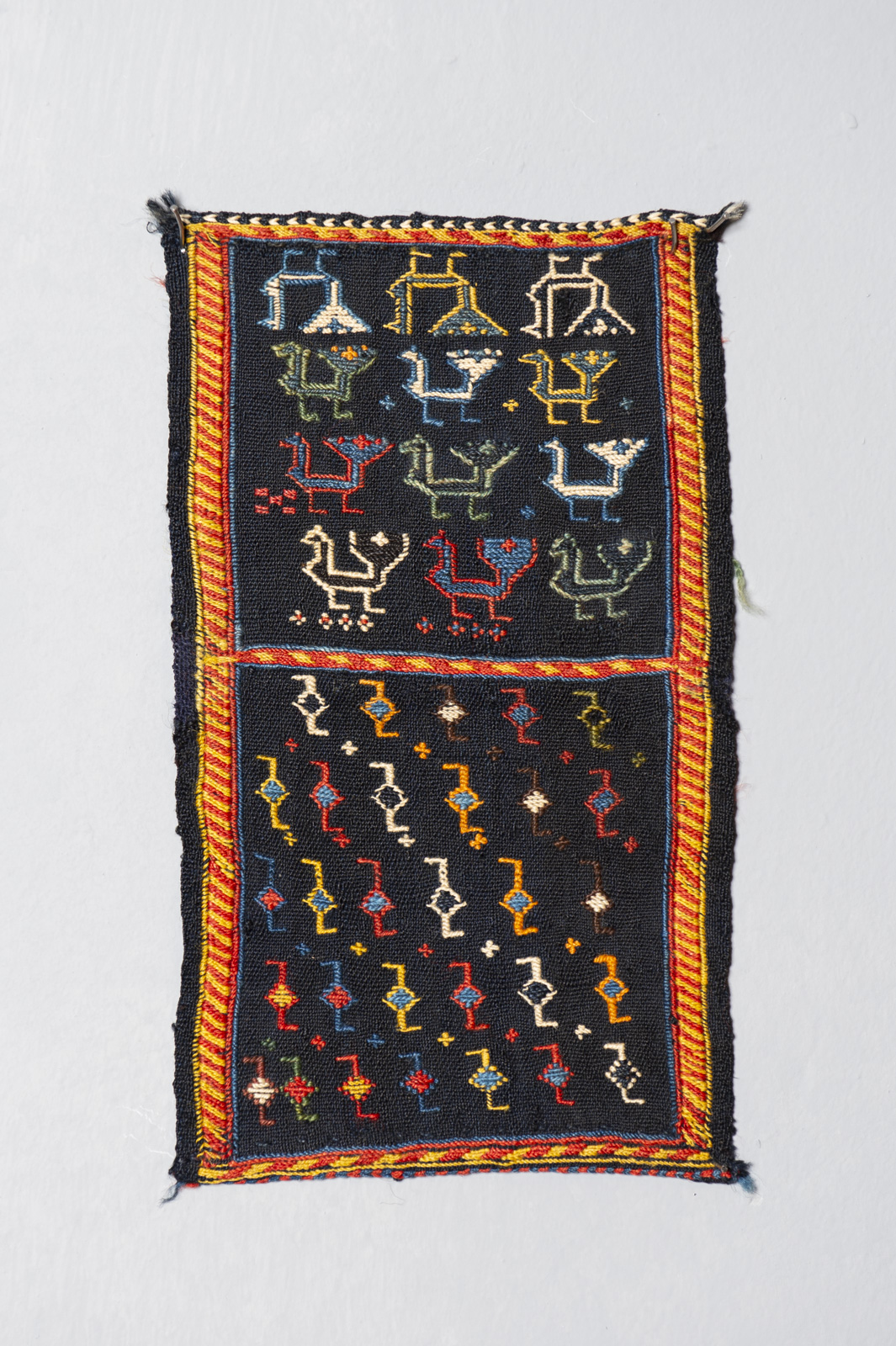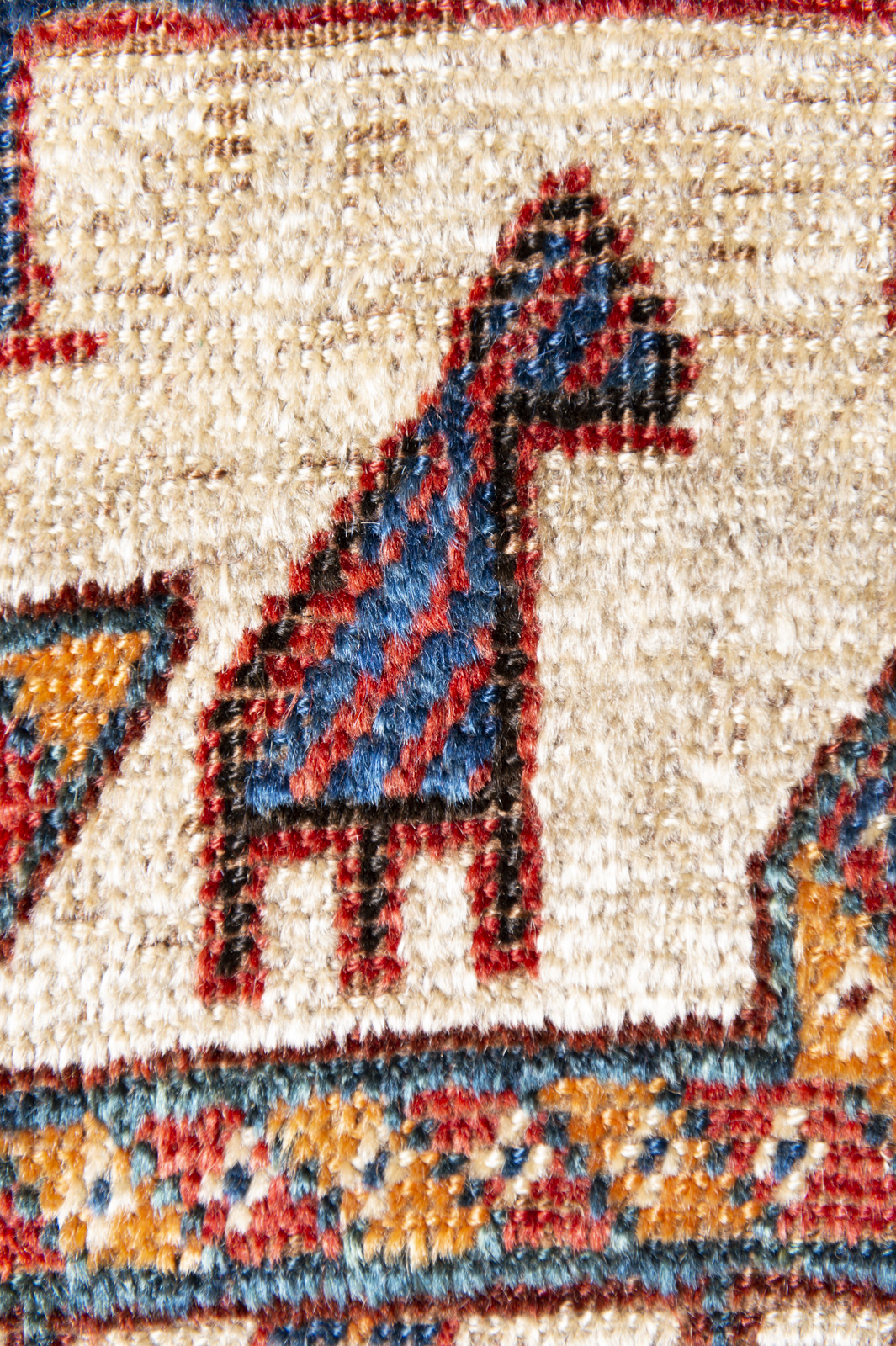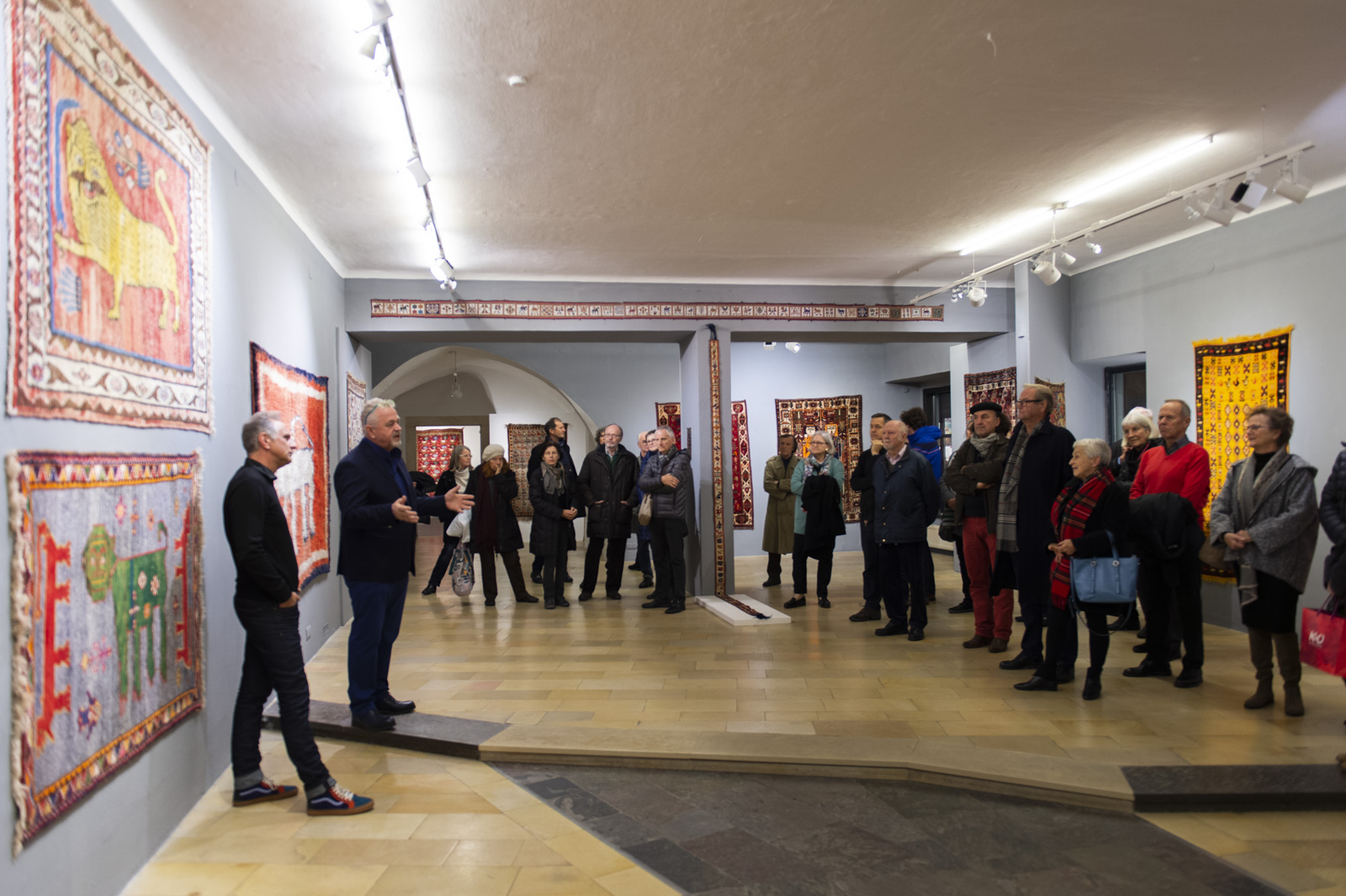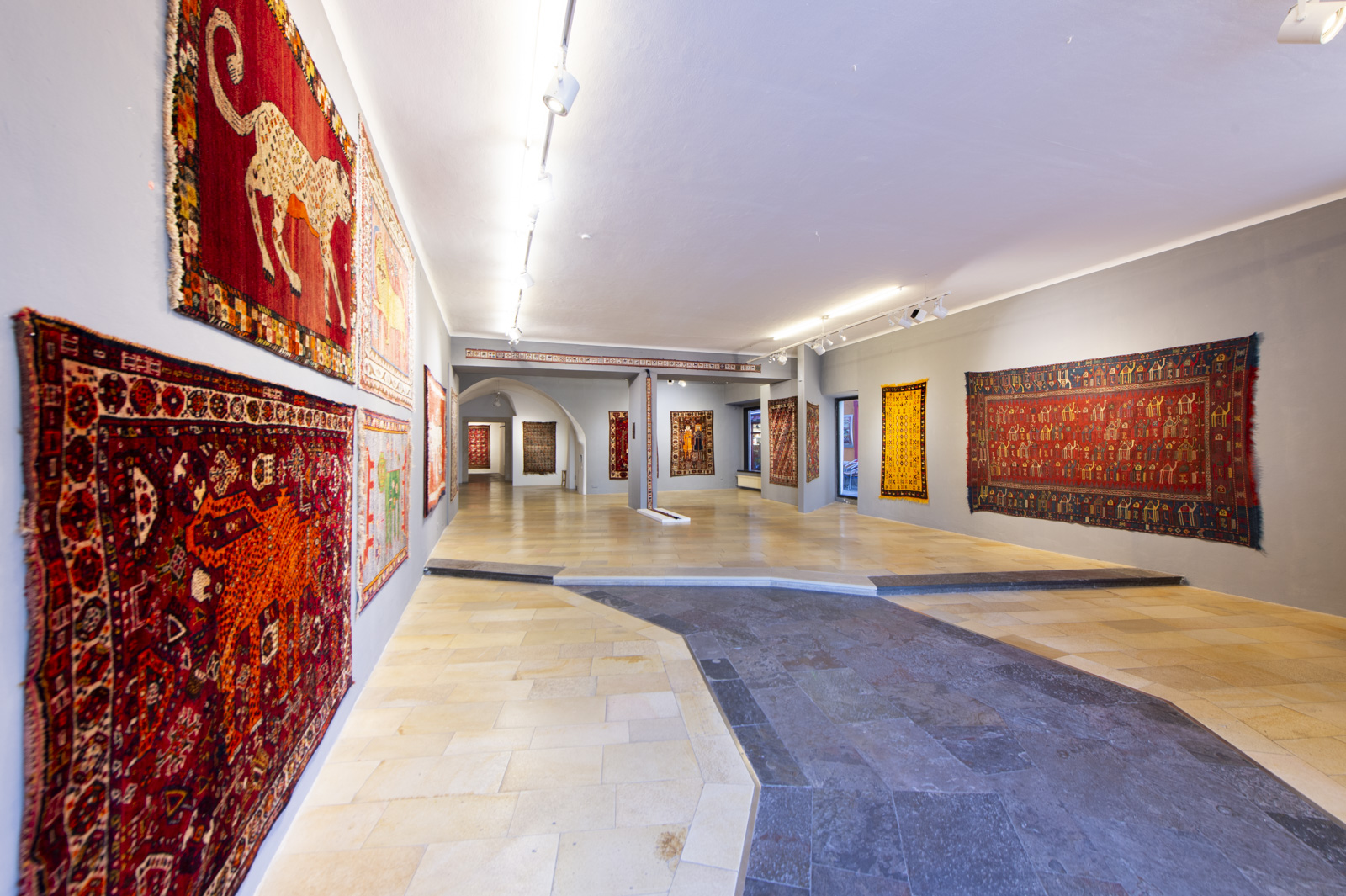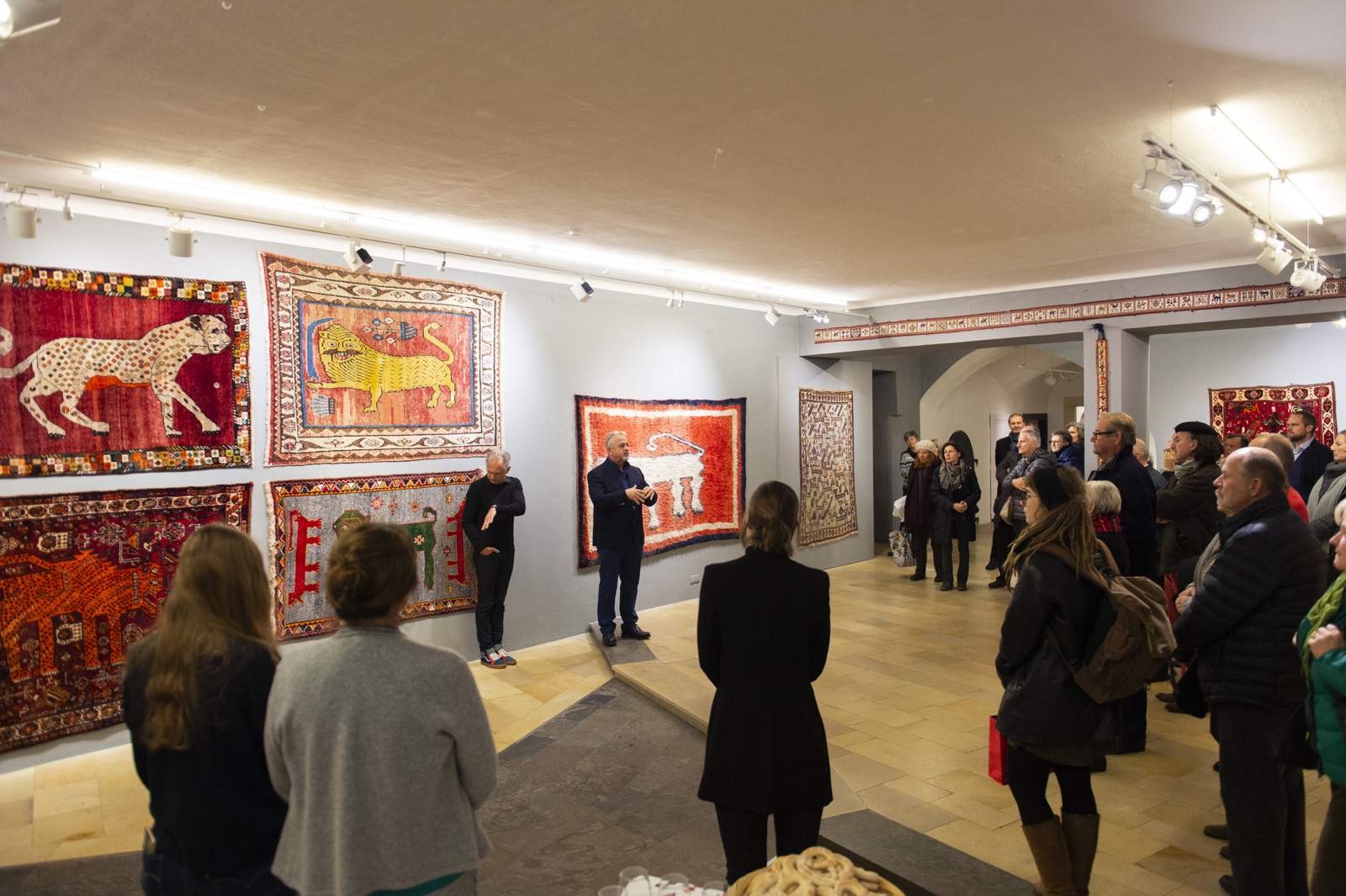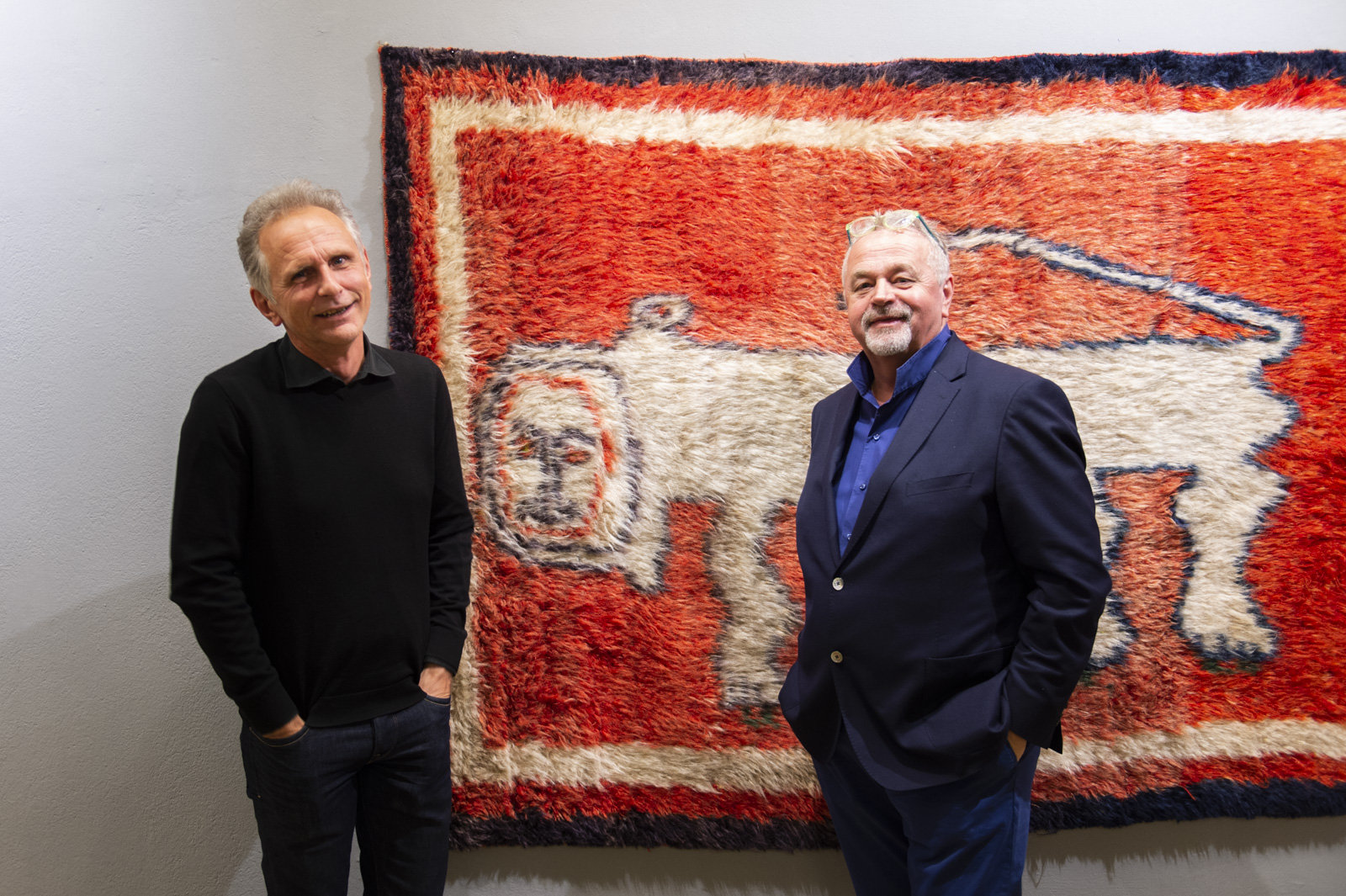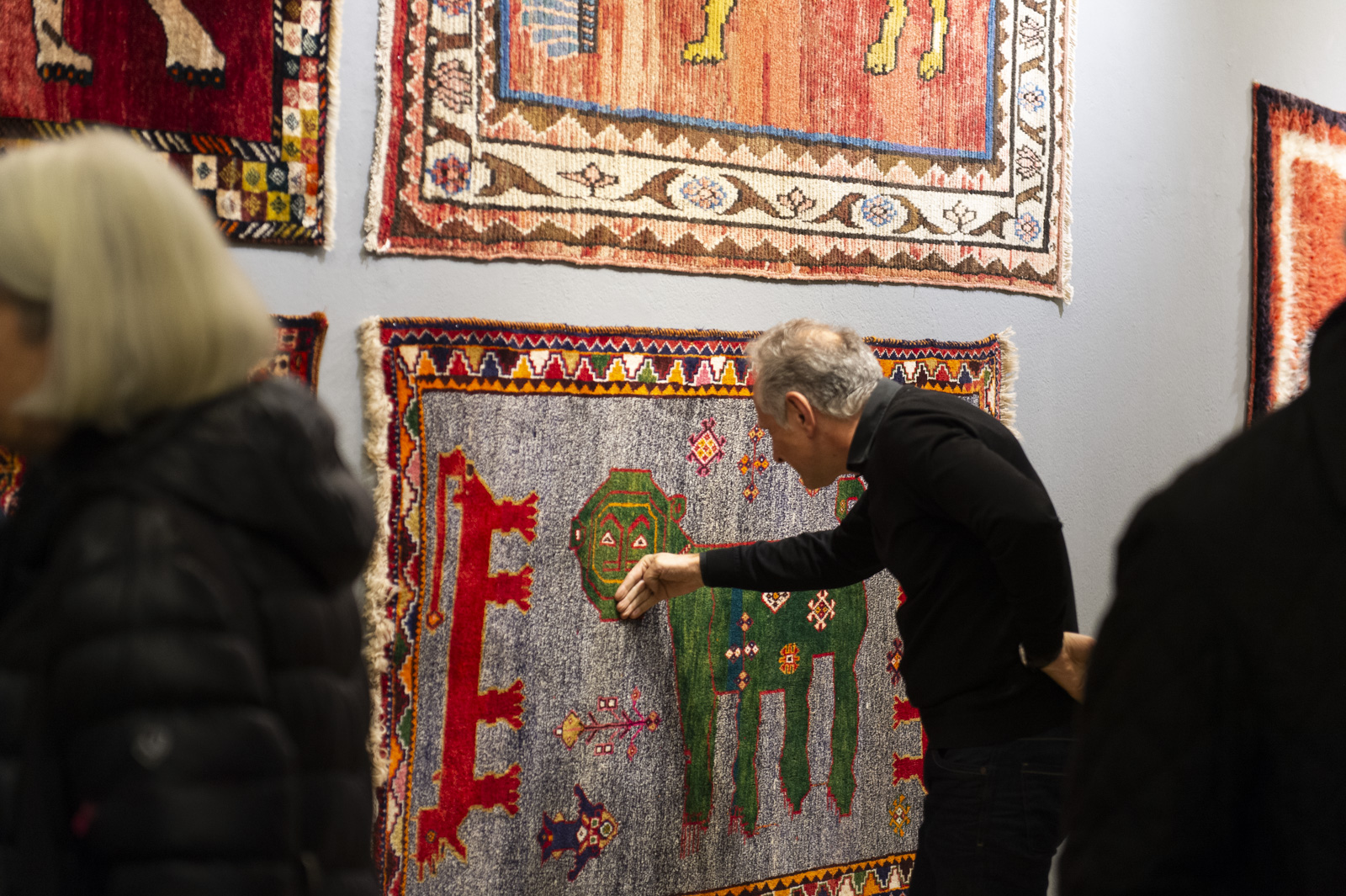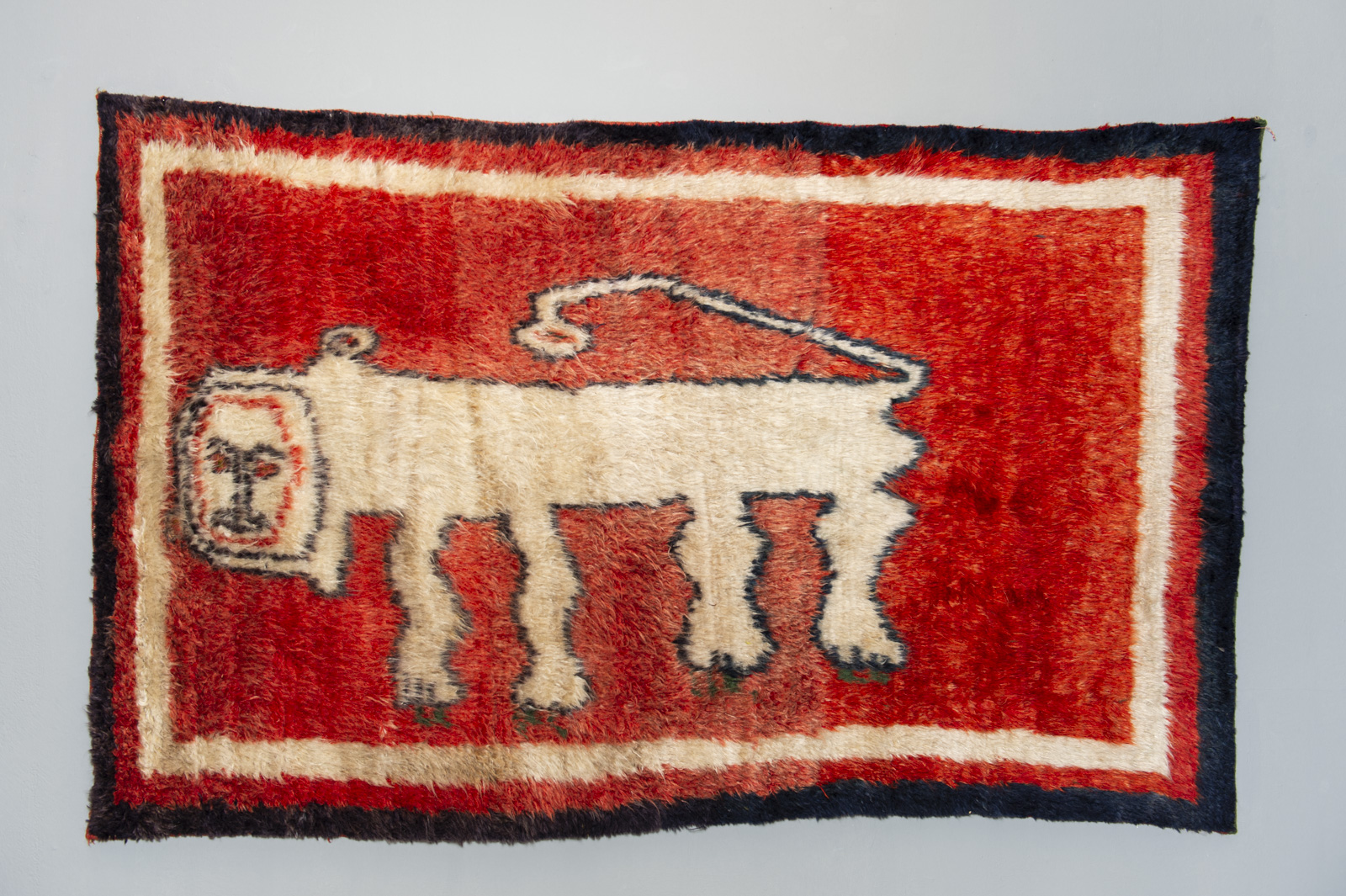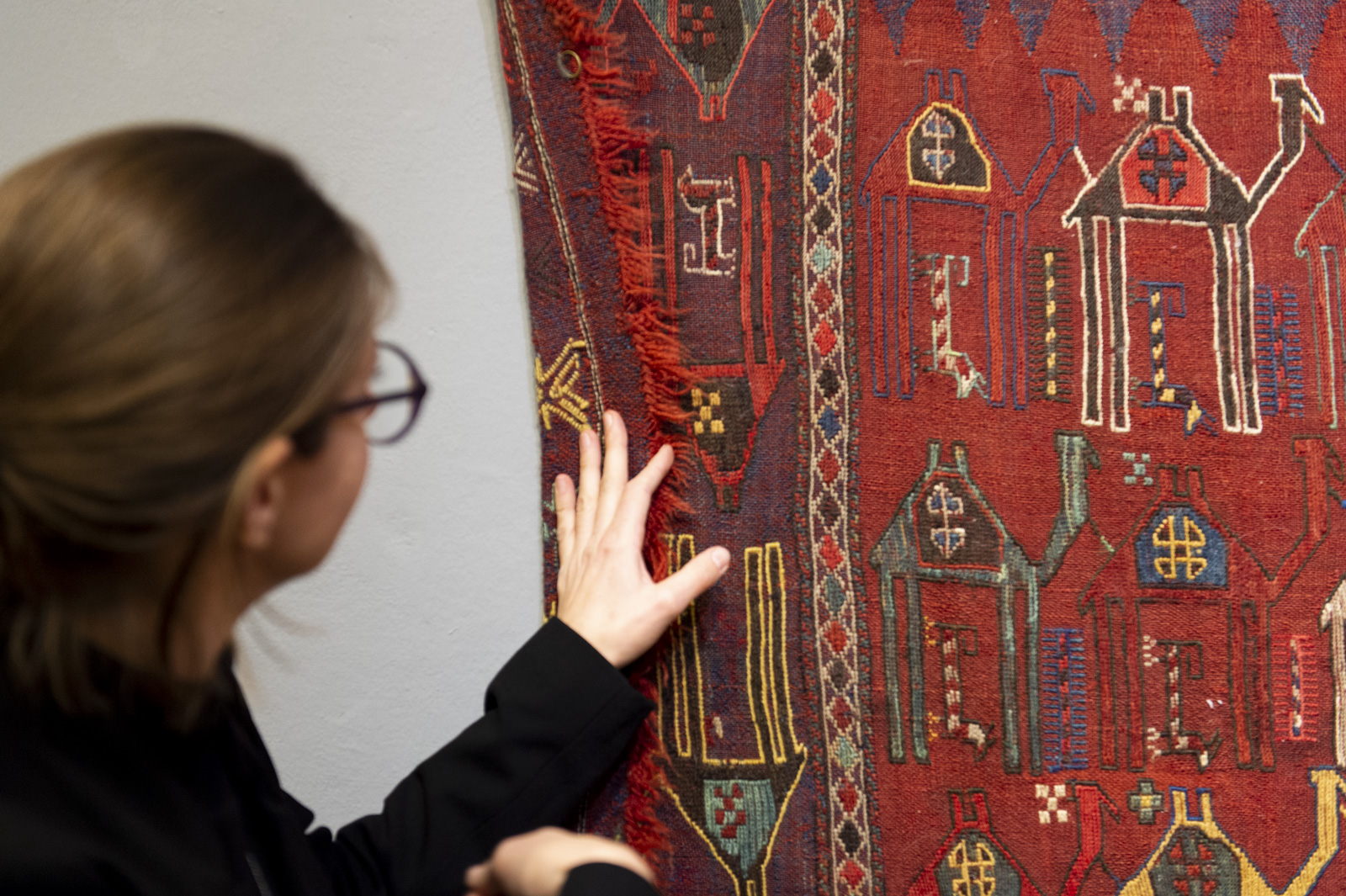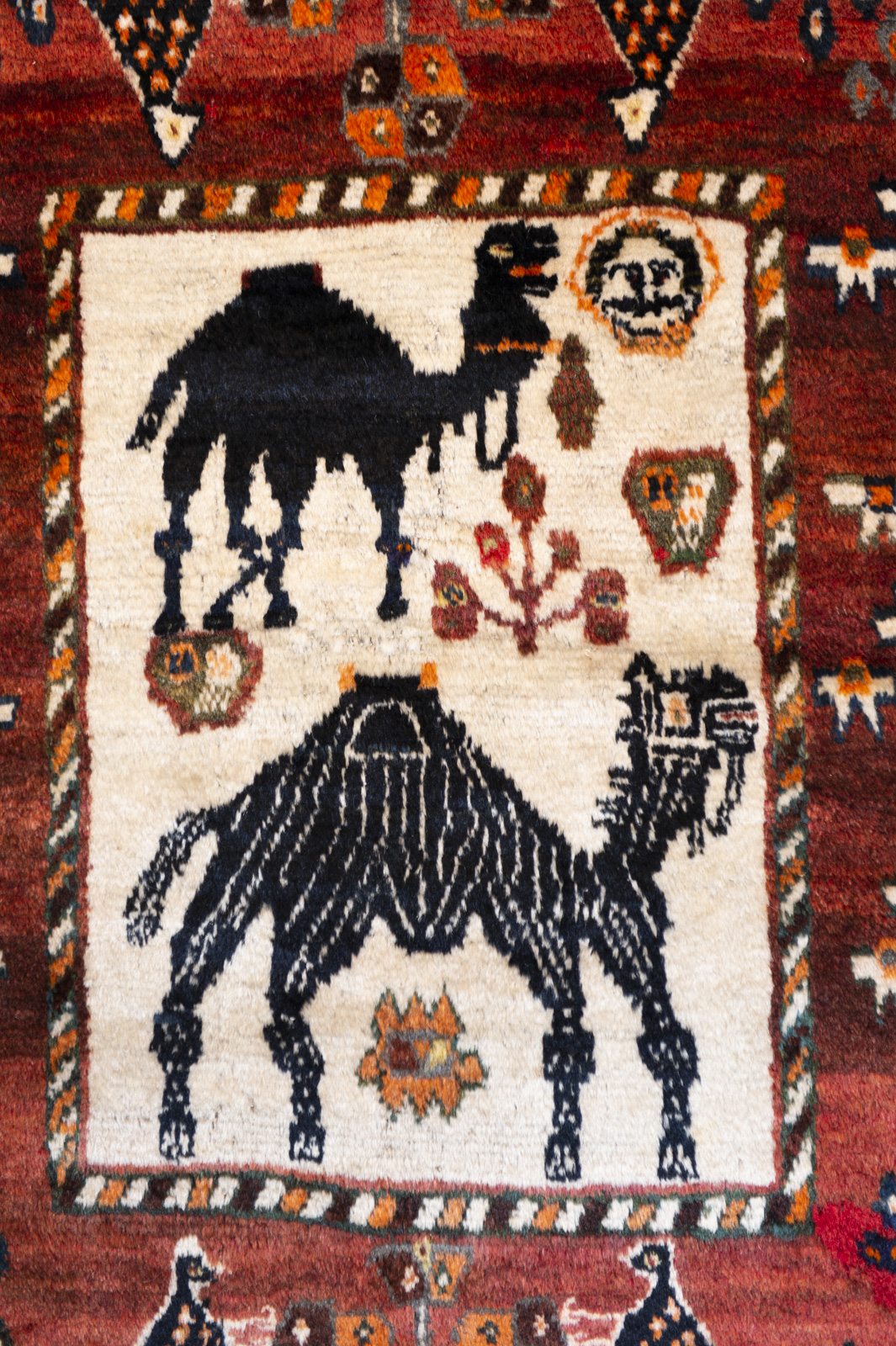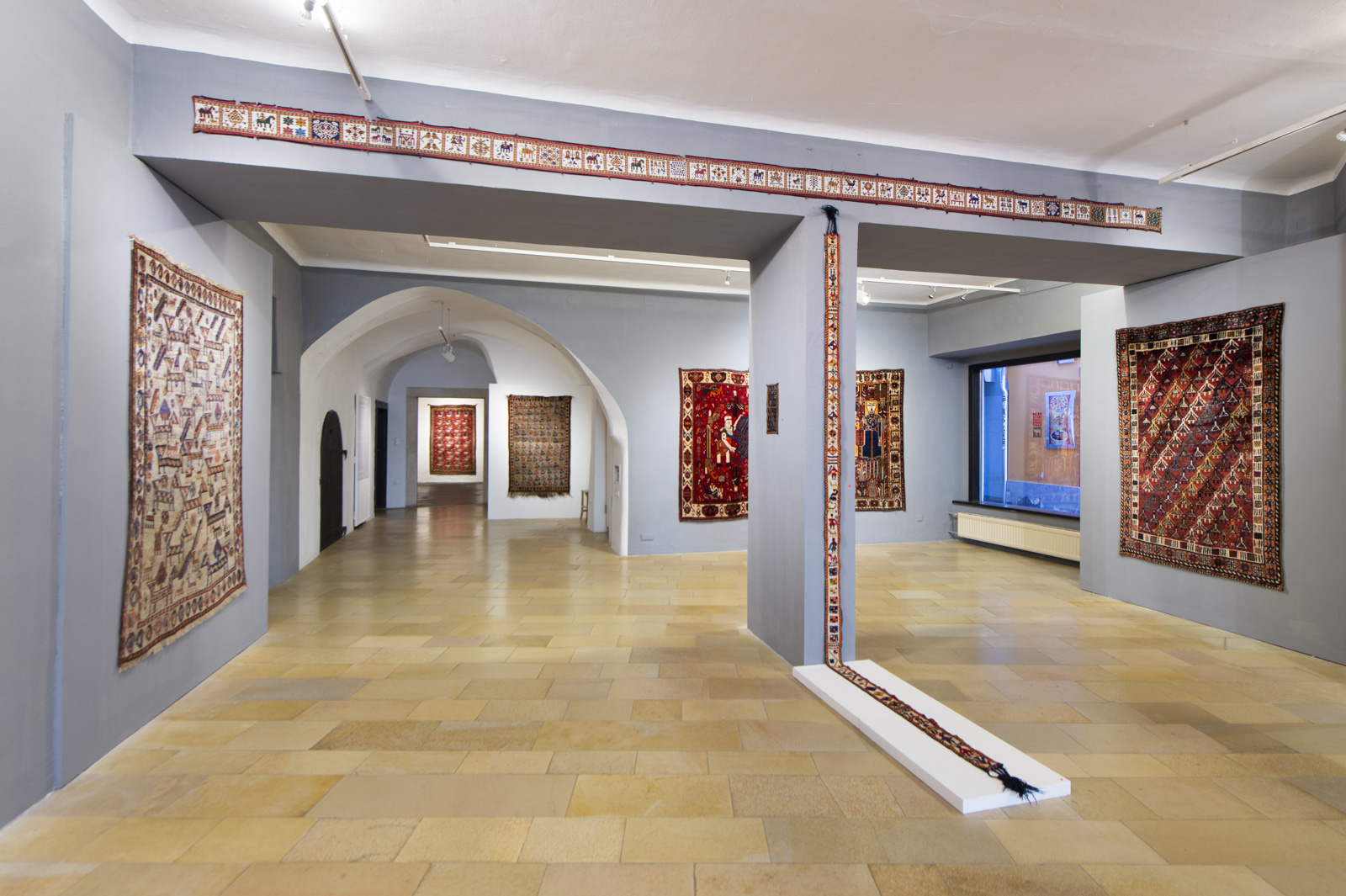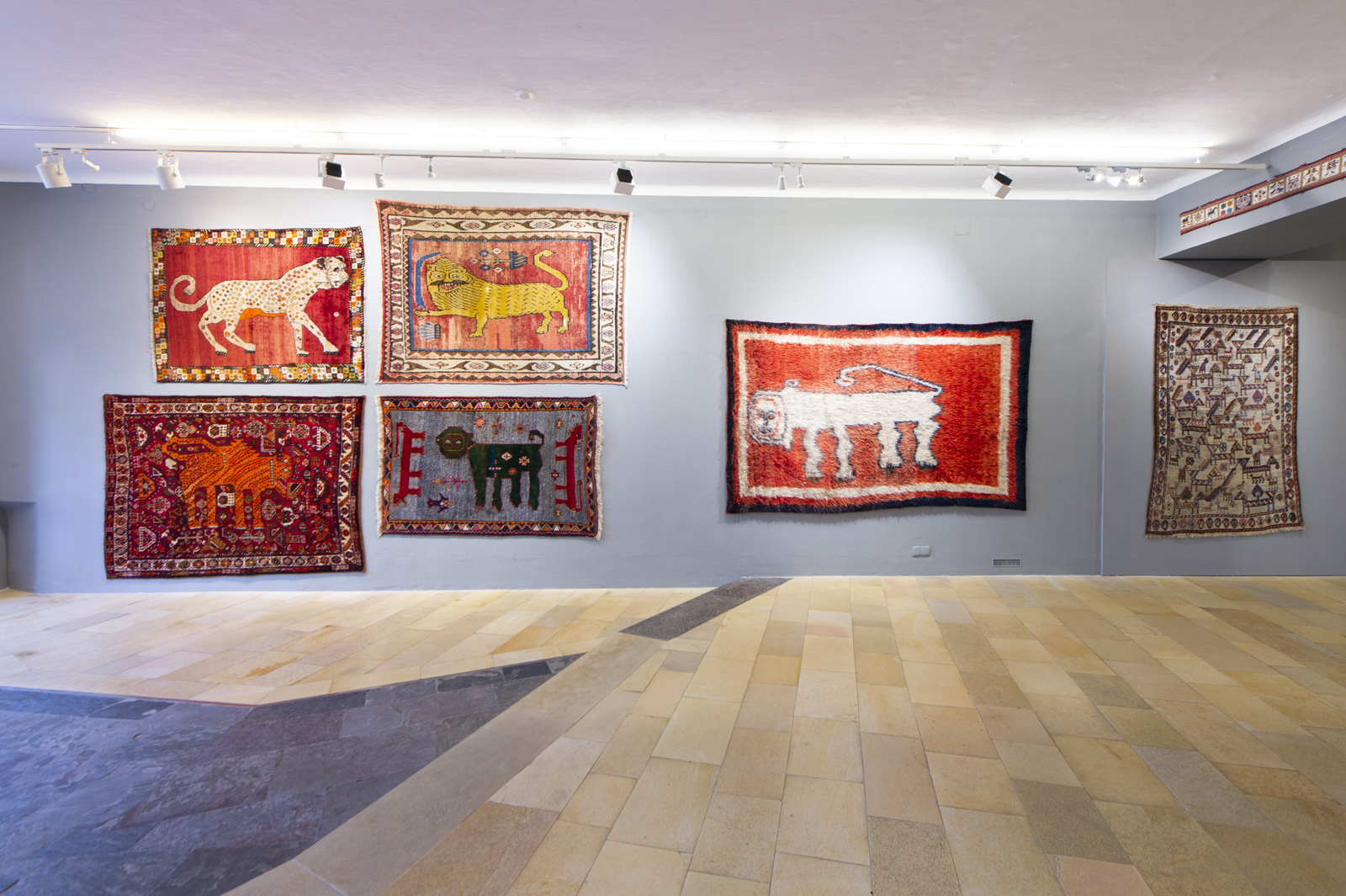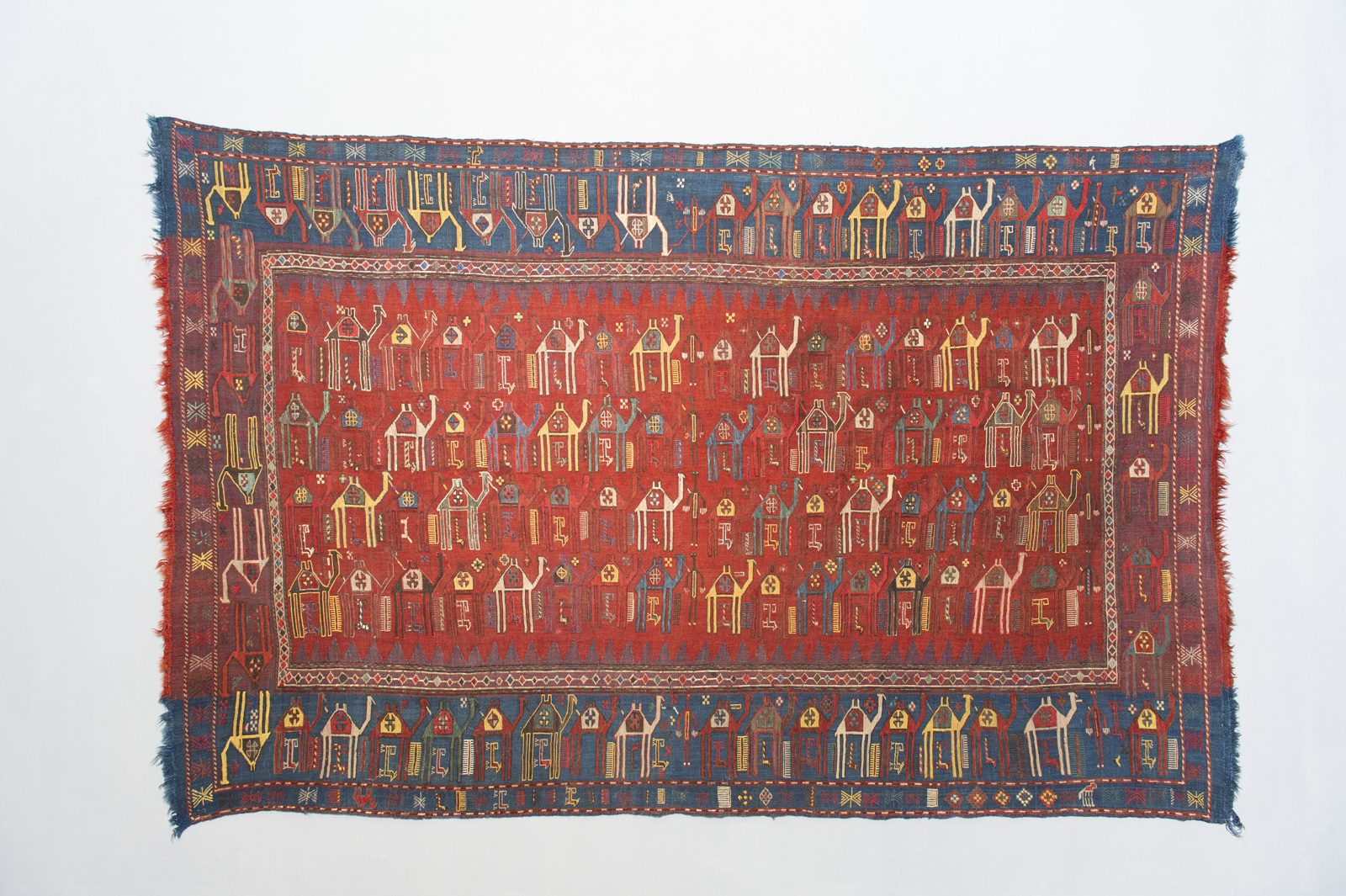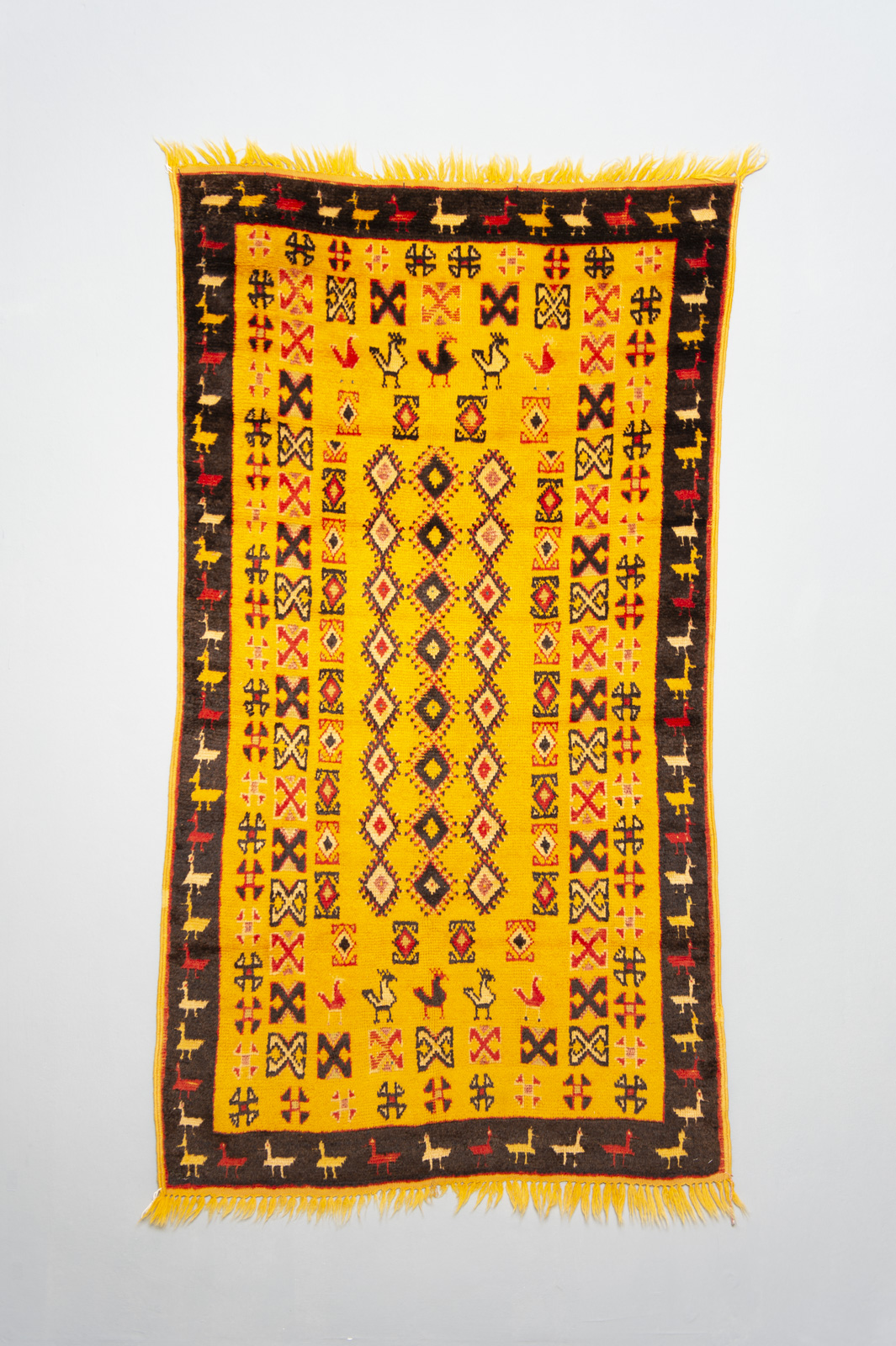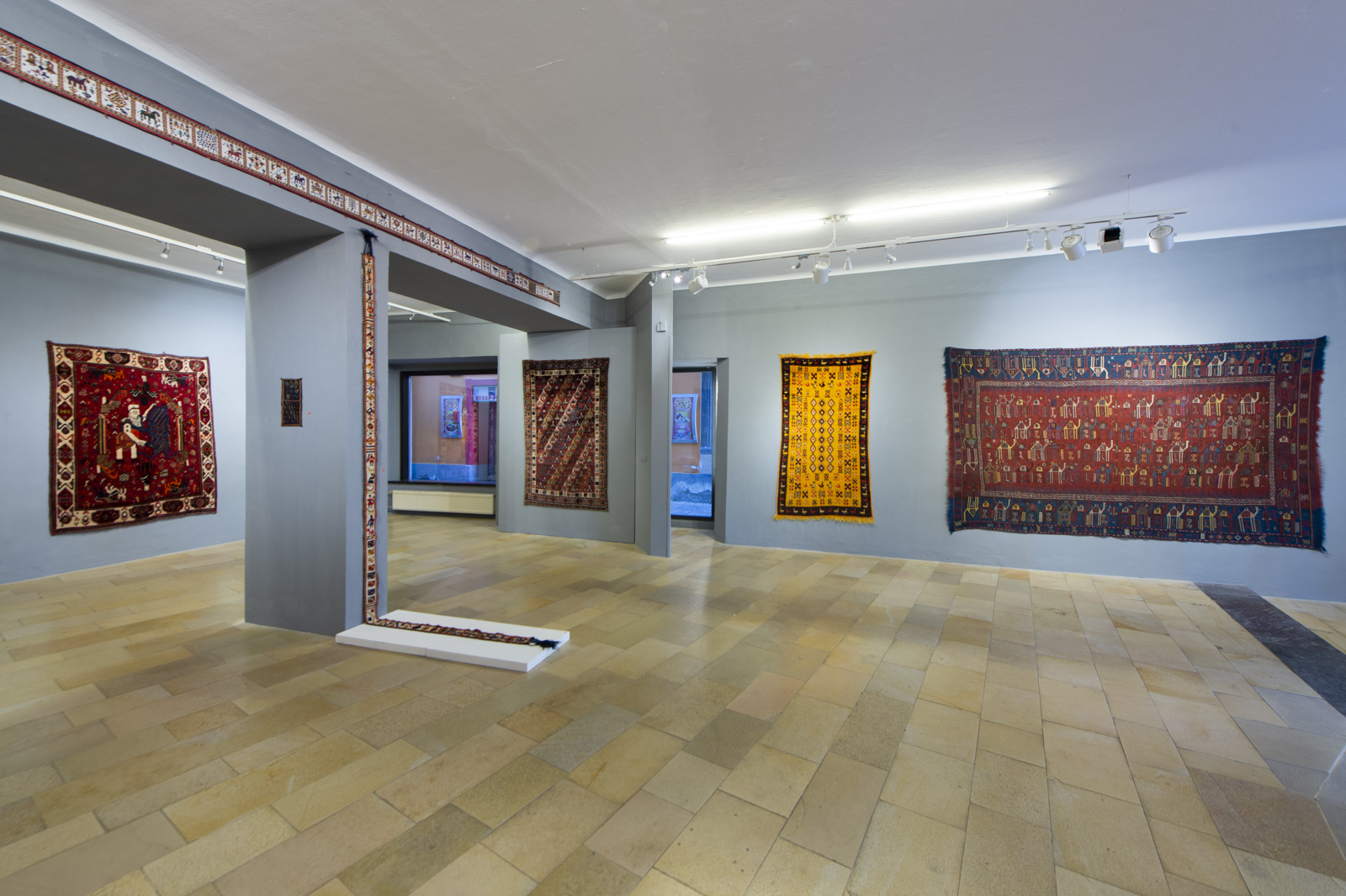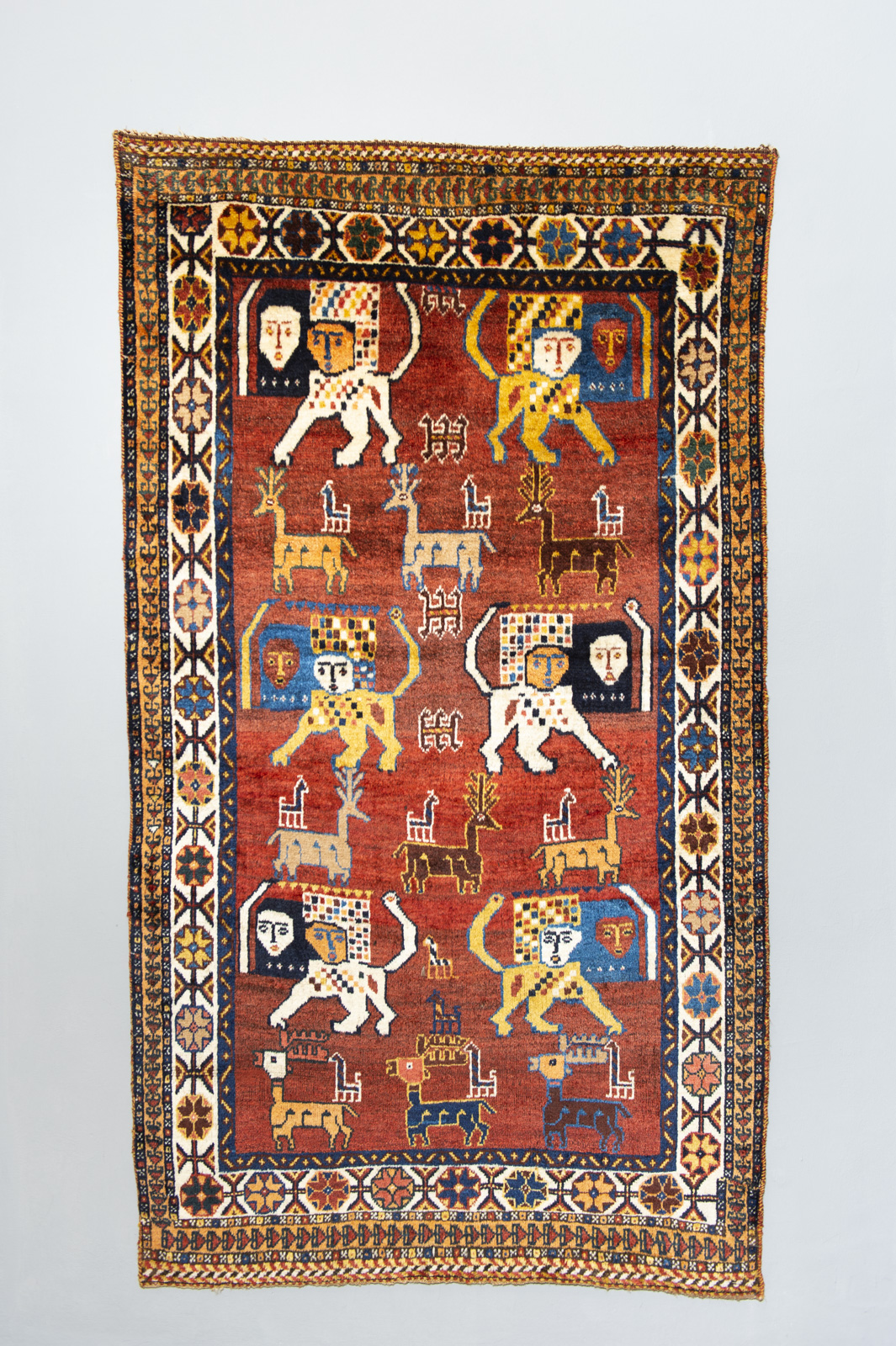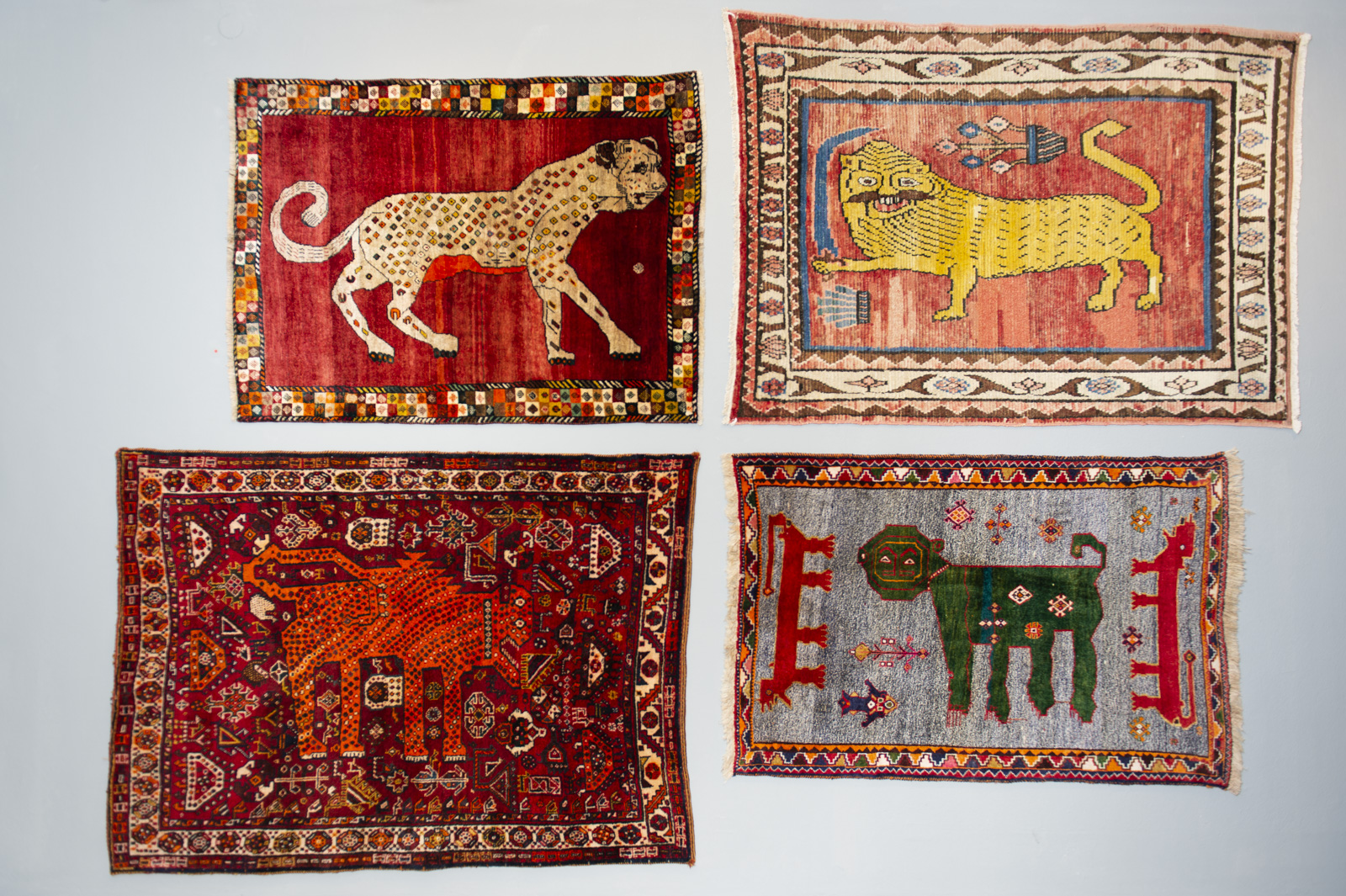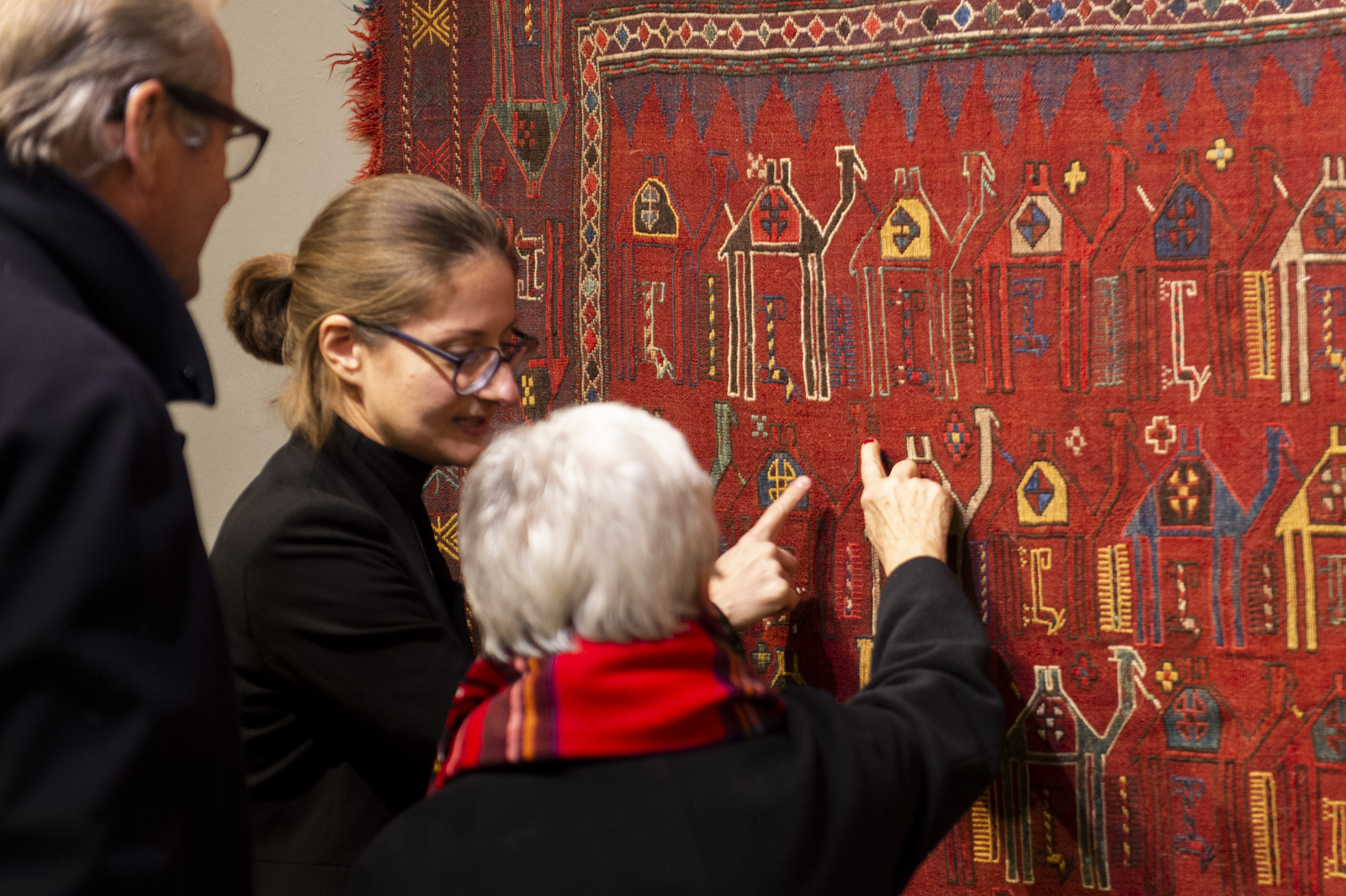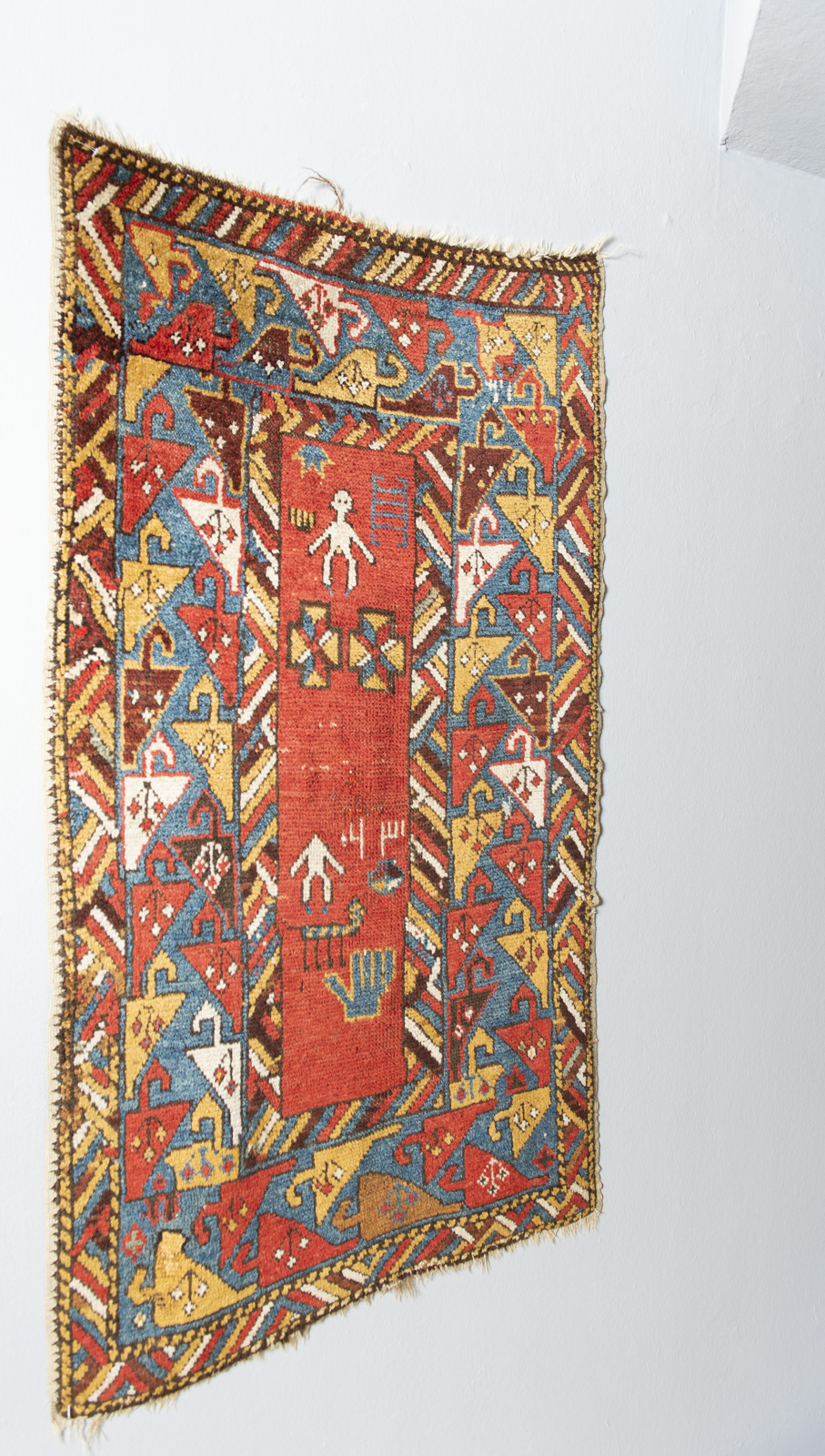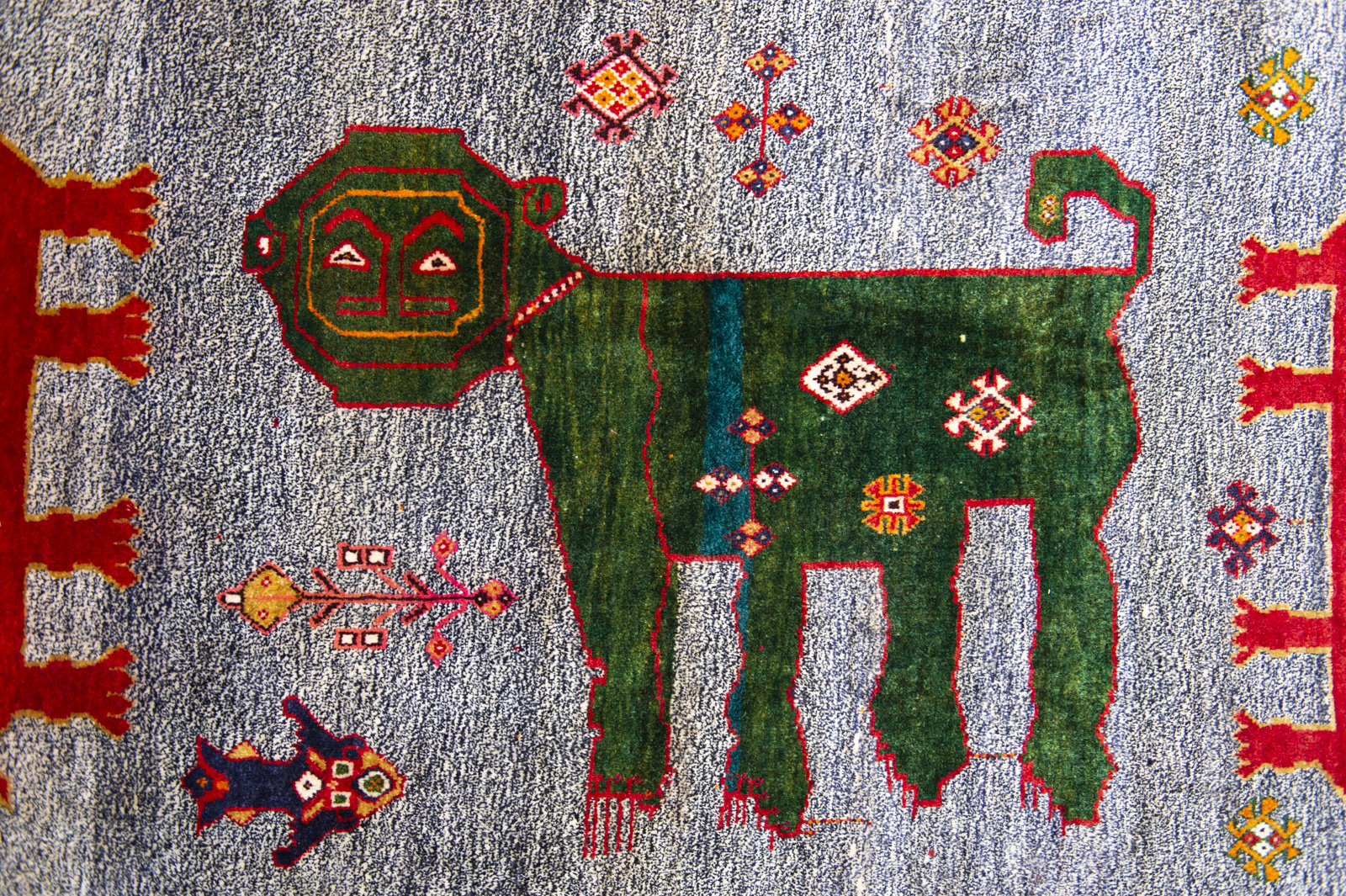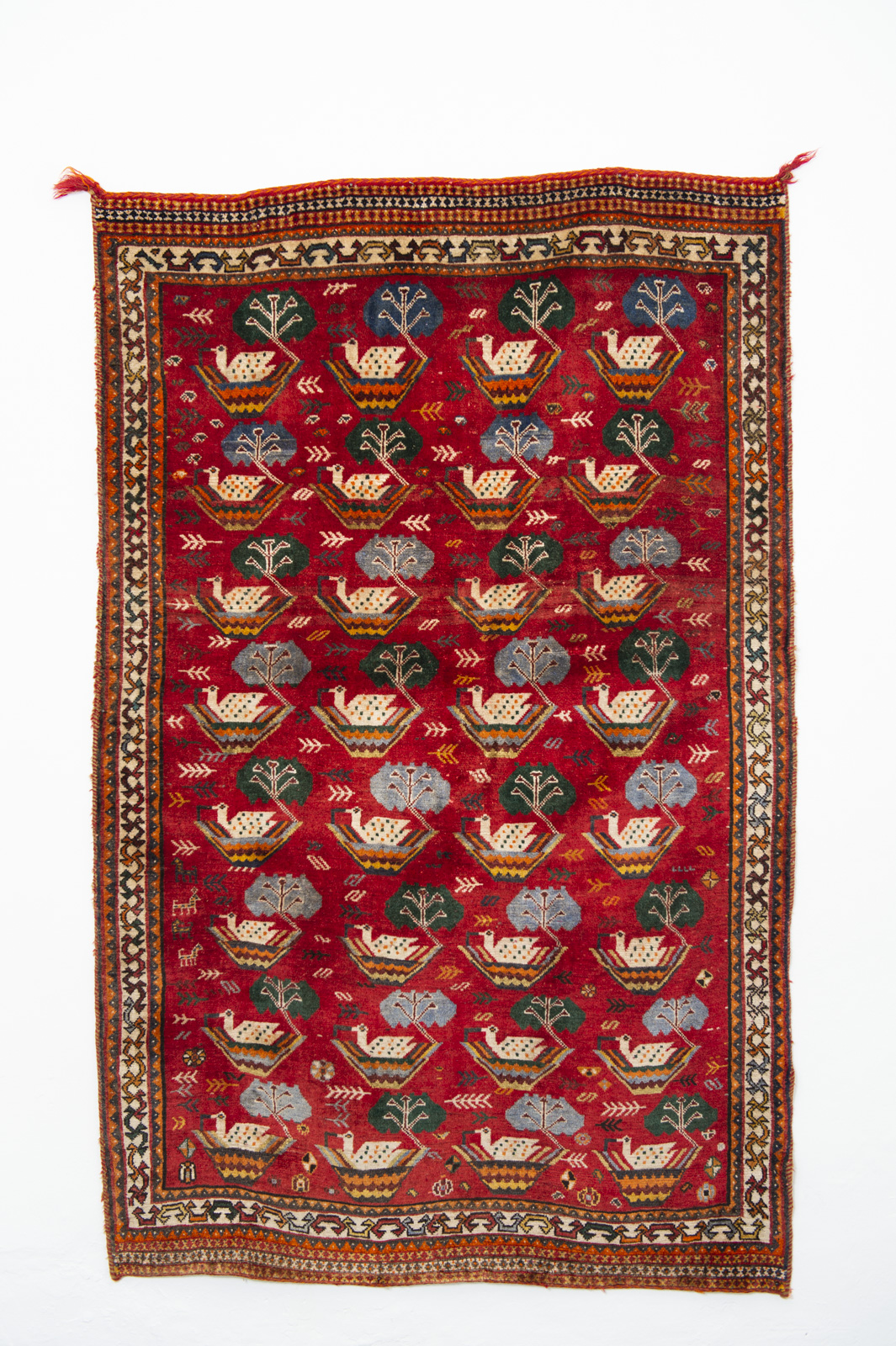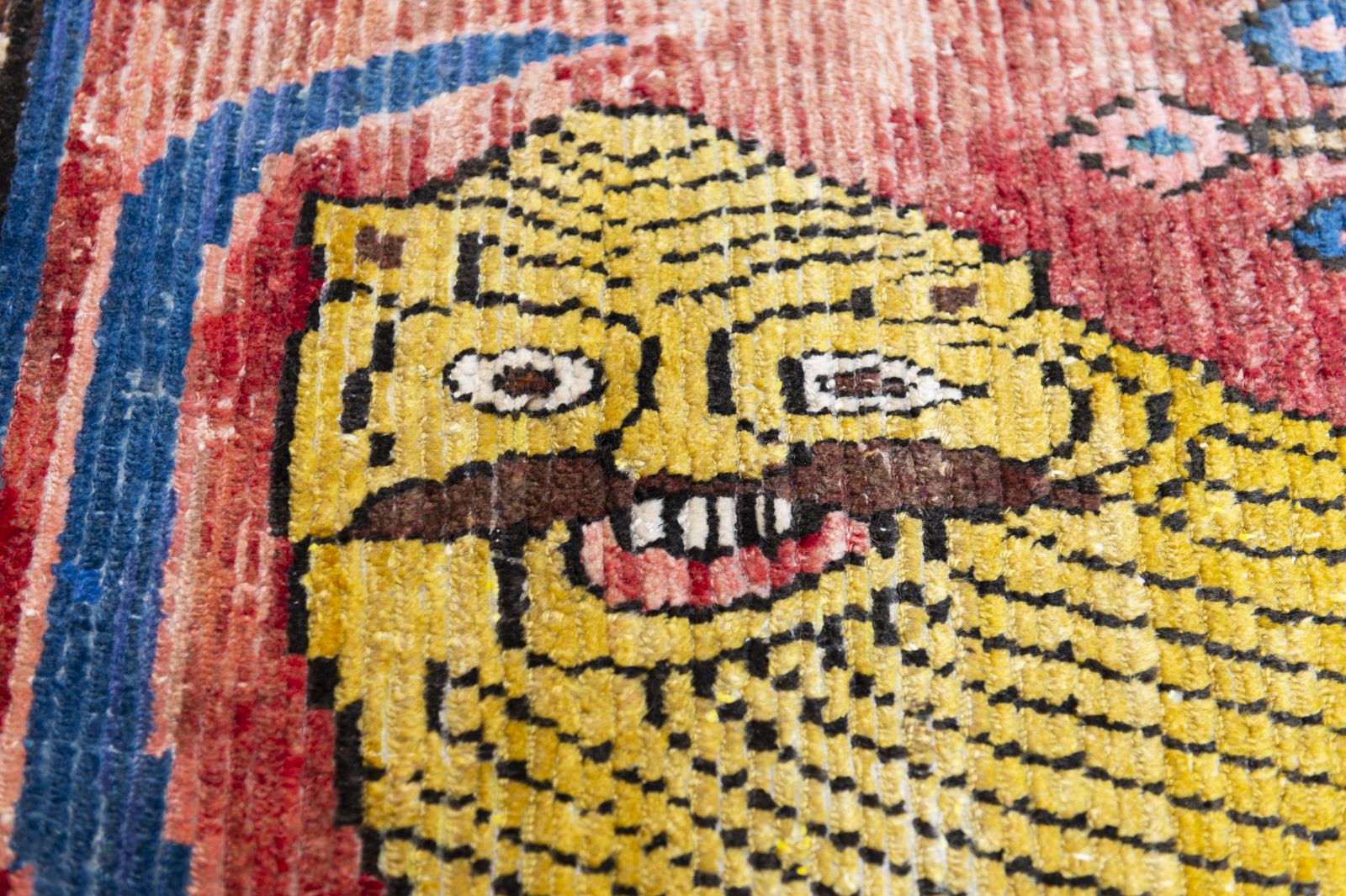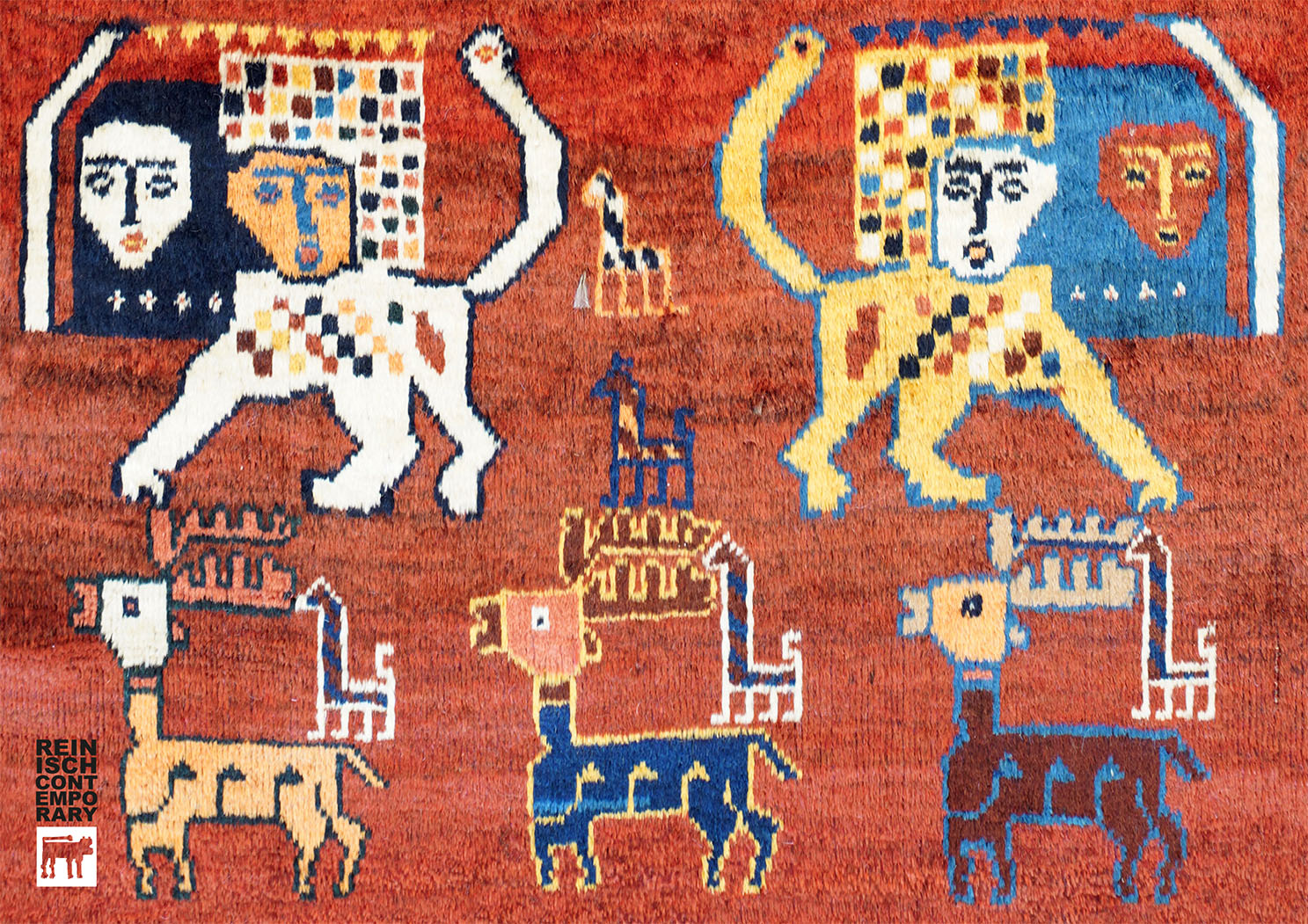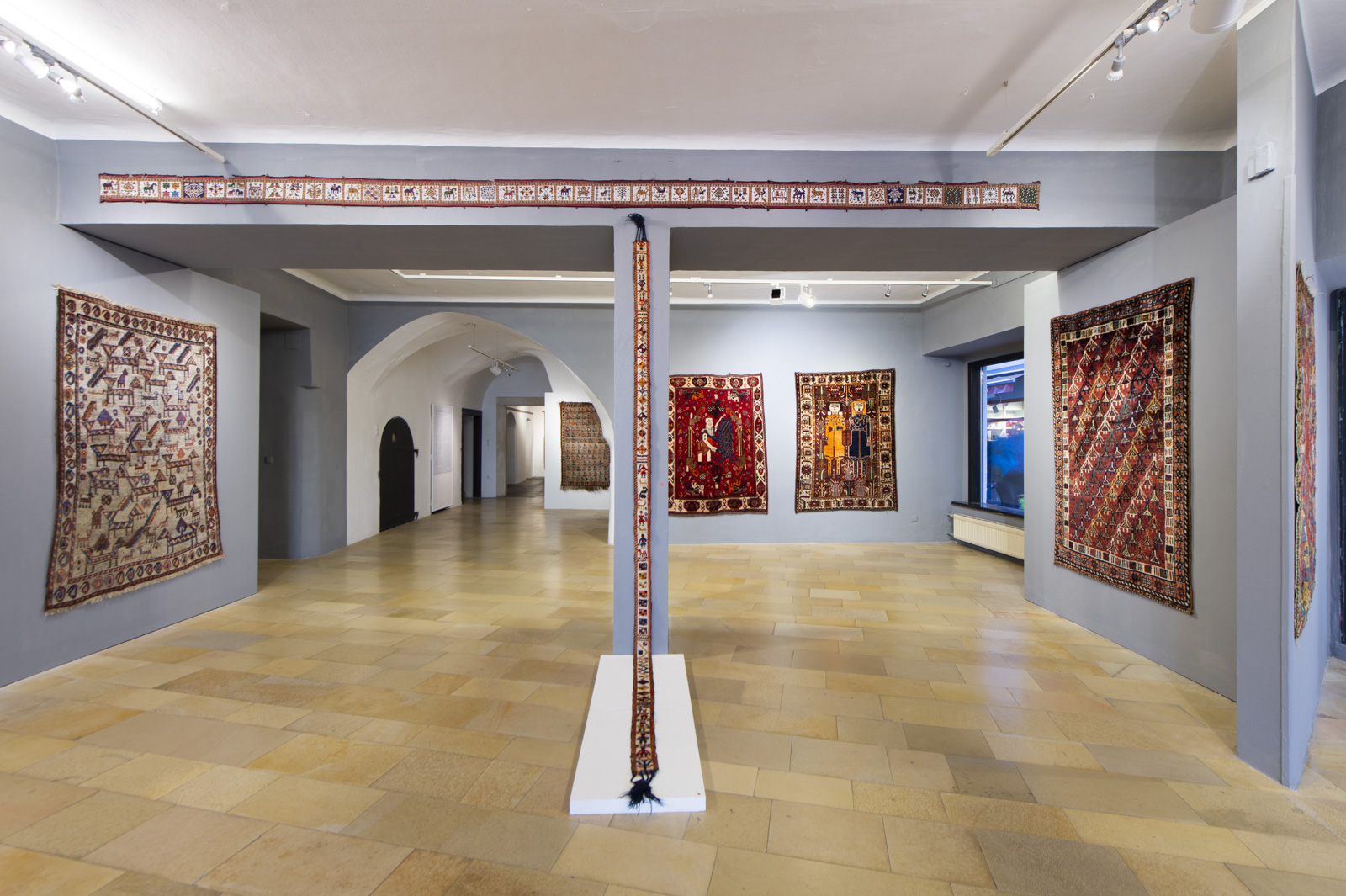Opening 26th of November 2018
7Pm Hauptplatz 6, Graz
Introduction Günther Holler-Schuster
Exhibition until 20th December 2018
Here, the puzzle of what is depicted on a rug and whether the possibility of a realistic representation exists in this regard is a central point of interest. The formulations of carpets, which we mistakenly think are abstract and reduced to ornamental structures, are full of messages, narratives and images. Looking back on the 4th century BC, to the Pazyryk carpet displaying a funeral procession and to contemporaneous Scythian felt carpets, one constantly comes across fairly realistic portrayals of figures, animals, plants, landscapes, mythical creatures and all kinds of objects. Whether in Armenian textiles with their countless depictions of camels, in Chinese carpets with their cranes and tigers, in Caucasian dragon carpets or in the “hunt carpets” of the Safavids with their depictions of entire scenes: realistic and sometimes highly stereotypical representations of narrative content can be found in virtually every case.
Roughly speaking, two types of such carpets can be defined. Some follow the tradition of simplification, with their figures reduced to the point that they almost resemble pictograms. Most of their producers were nomads. While their craftsmanship is indeed powerful, the intellectual refinement usually evident in courtly art is missing here. Even so, sagas, fairy tales, myths and pre-Islamic traditions come alive in such pieces.
The second strand essentially originates from male and female weavers who adopted illustrations of courtly book illumination from the mid-19th century onwards. Since many of these carpets originated in Iran, they feature themes from Persian love poetry (Khosrow and Shirin, Layla and Majnun), national heroic epics (Shah name) and other classic poetry. In general, Persian tales are not solely conveyed by word of mouth. Instead, they have become known through book illuminations, faience or reverse glass painting – and are, in a sense, all-pervasive. Consequently, their transformation into wefts seems quite plausible. Realistic representations that convey the impression of weft painting are the result – a tradition that extends to today’s “war rugs” from Afghanistan.
The widely held supposition that any image is forbidden under Islam must be qualified at this point – a relevant proscription cannot be found anywhere in the Quran. Illustrations in a non-religious context are basically permitted. In a sacred context – for example, in the sacred setting of the mosque – pictorial representation is taboo, however. Roughly speaking, figurative illustrations are evidently allowed in the case of objects which are designed for sitting or walking on. The danger of the graven image no longer exists due to their commonplace use.
When we take a careful look at the example of Iran’s ubiquitous lion, we can see the difference between the Sunni and Shia interpretation of Islam: after all, Persian art has exhibited the motif of the lion for some 3,000 years. Stone lions were still being sculpted for the graves of famous warriors as recently as 100 years ago. In Shia Islam, the lion stands for Ali ibn Abi Talib, the son-in-law of the Prophet and the first imam of the Shias – Ali is known as the “Lion of Allah.” Together with the sword and the sun, the lion remains Iran’s central heraldic animal to this day. Consequently, Ali’s descendants were also associated with the lion and are still represented by it today. In all cultures in which the lion appears, it symbolises the same exalted qualities – of pride, courage, power, authority and masculinity. The fact that things can turn out quite differently is evident in the example of the ducks. For us, the image of the duck is associated with several ideas that verge on the comical – ducks are plump, they quack and waddle. In western culture they can be reminiscent of comic book characters which make up for their apparently physical ungainliness through their cunning. Not so in eastern culture. Ducks often feature on carpets with a mystical content. As early as the 12th century, the Syrian author Ghanim al-Maqdisi had already shed light on the matter: in his book “Kashf al-Asrar” (The Unveiling of the Mysteries), he describes the symbolic meaning of ducks as perfect beings. They swim on water, walk on land and fly into the air. Hence, they are at home in each and any element, which makes them magical and worthy of mystical ideas. The profane keeping of these animals as livestock or as loveably twee, awkward creatures that can amuse children does not play any part at all in eastern culture.
In this exhibition, the Reinisch Contemporary Gallery turns its attention to carpets which feature abstracted, schematised illustrations. Some of them follow enduring pre-Islamic traditions which have evolved from generation to generation in all nomadic societies. Others offer clear testimony to the realities of life in historical times, right through to the Modern Age – with the focus on rise and decline, the sustainment of life, work and religion. In this regard, role models can easily reside in dark times, in the ancient world: they are revealed, for example, in the remnants of Persepolis in Iran, or are expressed in other forms of art, such as bronzes, carvings and ceramics. In keeping with the rural context, animals serve as the primary channel through which content is conveyed. Such creatures include livestock (in the form of camels, goats and ducks), heraldic animals (lions, eagles and peacocks) and mythical inventions (such as dragons, phoenixes and griffins). Different meanings are ascribed to all these creatures in different areas. Some of them, such as heraldic animals, can be found throughout the entire carpet belt from China to North Africa. In periods alien to the predominance of the visual in today’s world, such carpets can be regarded as a constitutive element in shaping people’s general visual environment – visible reality was captured in images and connected with the world of thought. And yes, imagining such realities was animated by spiritual power. In these images, the distress, needs, longings, hopes and fears of people are condensed into a constantly parallel existing cosmos.
Günther Holler-Schuster
